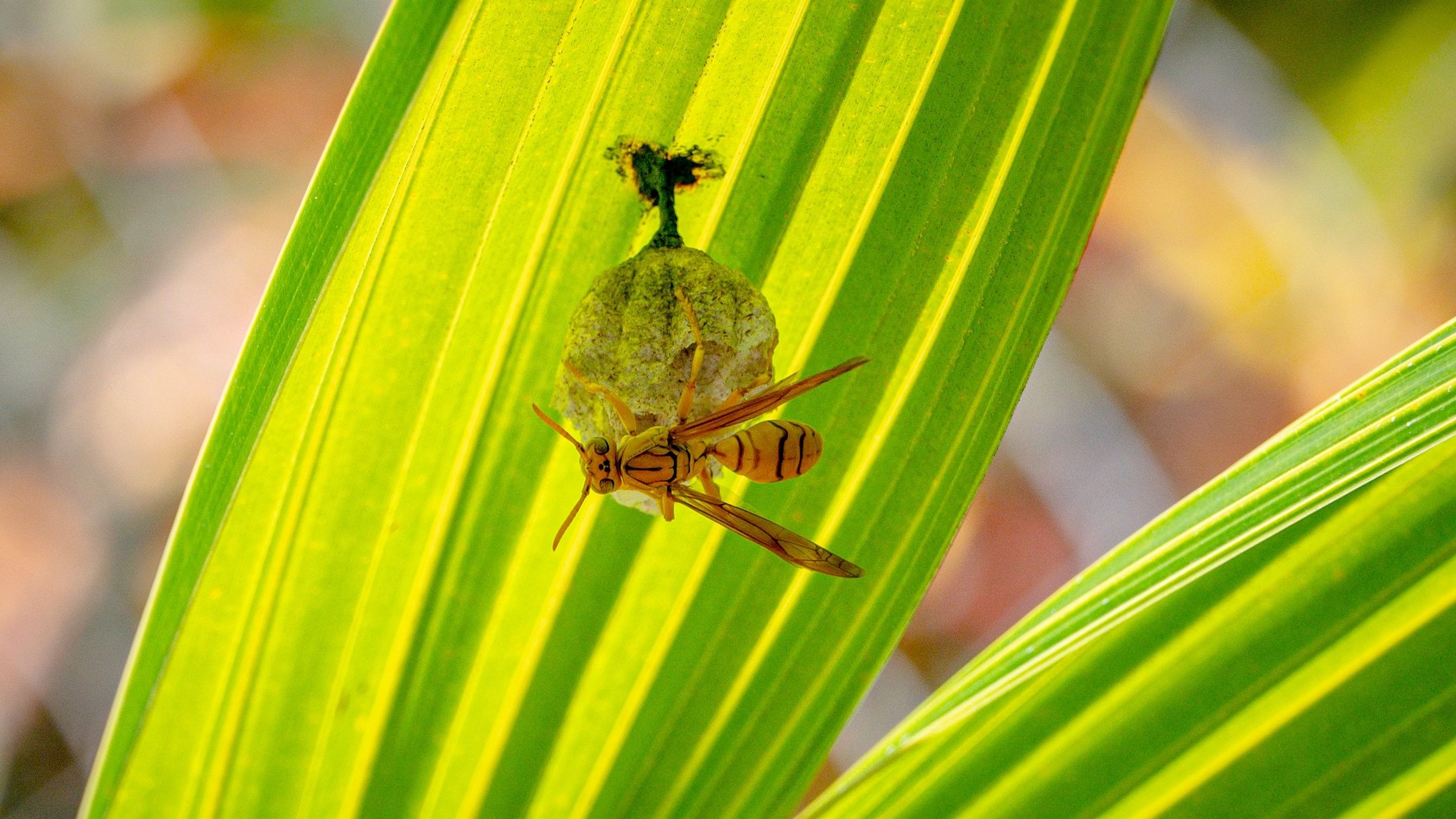
Credit: Special Arrangement
A little chamber at the rear of our cottage, secured by a metal gate, is our natural farm’s nerve centre. It holds a pair of perennially buzzing and blinking solar UPS batteries that light our cottage and power our CCTV cameras and the solar fence along the perimeter of the farm. This pair of UPS batteries often throw in the towel, rendering us powerless in every sense of the word.
One bright morning, the UPS powering the house malfunctioned. My husband made his way to the rear of the cottage to inspect the device. No sooner had he approached the chamber, than he staggered back involuntarily. Pain seared through his right arm. Gathering his wits about him, he quickly retreated.
The source of the attack? An innocuous broken blue plastic drum standing on an exposed shelf above the hold. Now the drum didn’t assume a life of its own to launch the offensive. Inside it lay the source of the assault — a nest of yellow oriental paper wasps.
There was no way one could approach the area without incensing the wasps. As he watched from afar contemplating his next move, a vexed yellow paper wasp was doing the same, airborne, upright, positioning itself between the nest and the intruder, and menacingly holding his gaze.
It was a hopeless predicament — a faulty UPS locked in a hold behind a clutch of belligerent wasps with venomous stingers, and no power in the cottage.
Yellow oriental paper wasps (Polistes olivaceous) are among 200 species of paper wasps of the genus Polistes. They are native to India and temperate East Asia. Wasps feed on carbohydrate-rich nectar and pollen from plenty of flowering flora. Being generalists makes them prolific pollinators.
The inch-long yellow paper wasps have small heads, thoraxes, cinched waists and narrow tapering abdomens.
They make parasol-like papery combs with open hexagonal cells from chewed-up wood. Think papier mâché. Hence the name paper wasp. They begin life as tiny eggs inside the cells of their nests. A nest can contain up to 200 cells with 20 to 30 adults. Wasp colonies have a rudimentary social structure with a queen, sterile worker females and reproductive males.
At the onset of summer or spring, a fertilised female wasp called the Foundress emerges from hibernation and establishes the colony. She begins building a nest, lays eggs and cares for the young. Female wasp larvae hatch first. Once the first generation of wasps morph into adulthood, the Foundress turns queen. She now solely lays eggs, while her daughters run the colony. These female worker wasps don’t reproduce. Instead, they dedicate themselves wholly to caring for their siblings and nest-building.
Newly hatched wasp larvae are white and legless. The worker wasps hunt for insects, chew on them to absorb the liquids and soften them for the babies, in a process called malaxation. They feed this protein-rich gourmet fare with crunchy aphids, juicy caterpillars or succulent beetle larvae, laced with nectar from seasonal wildflowers to the older larvae. They regurgitate the liquid for the younger larvae.
After a week, the larvae make silken seals for their cells, pupate for two weeks and emerge as adult wasps with wings, legs, and a pair of antennae. Adult wasps feed on nectar and pollen.
Well into summer, the queen lays up to 200 eggs. She eventually lays eggs holding potential queens called ‘gynes,’ and fertile male wasps. On attaining adulthood, the gynes mate with the males, fly the nest and find warm nooks and crannies to winter in. Having fulfilled their life’s only mission, the male wasps perish. The erstwhile queen passes on, making way for the next generation. The female worker wasps too perish. The once bustling colony winds down.
When spring arrives, the brand-new queens emerge from hibernation to find their colonies, and so turns the grand wheel of a paper wasp’s life.
As for the man-wasp face-off on Navilu Kaadu, we wily humans set smoke to disperse the wasps and reach the UPS in need of repair. We moved the drum to a remote corner of the farm with the nest intact. The lesson? Never stow away lidless blue plastic drums or any object that may be perceived as prime wild real estate, near human habitation.
Rooting for Nature is a monthly column on an off-kilter urban family’s trysts with nature on a natural farm.
(The author chipped away at a software marketing career before shifting gears to sustainable entrepreneurship and natural farming. She posts as @ramyacoushik on Instagram. Reach her at bluejaydiaries@gmail.com)